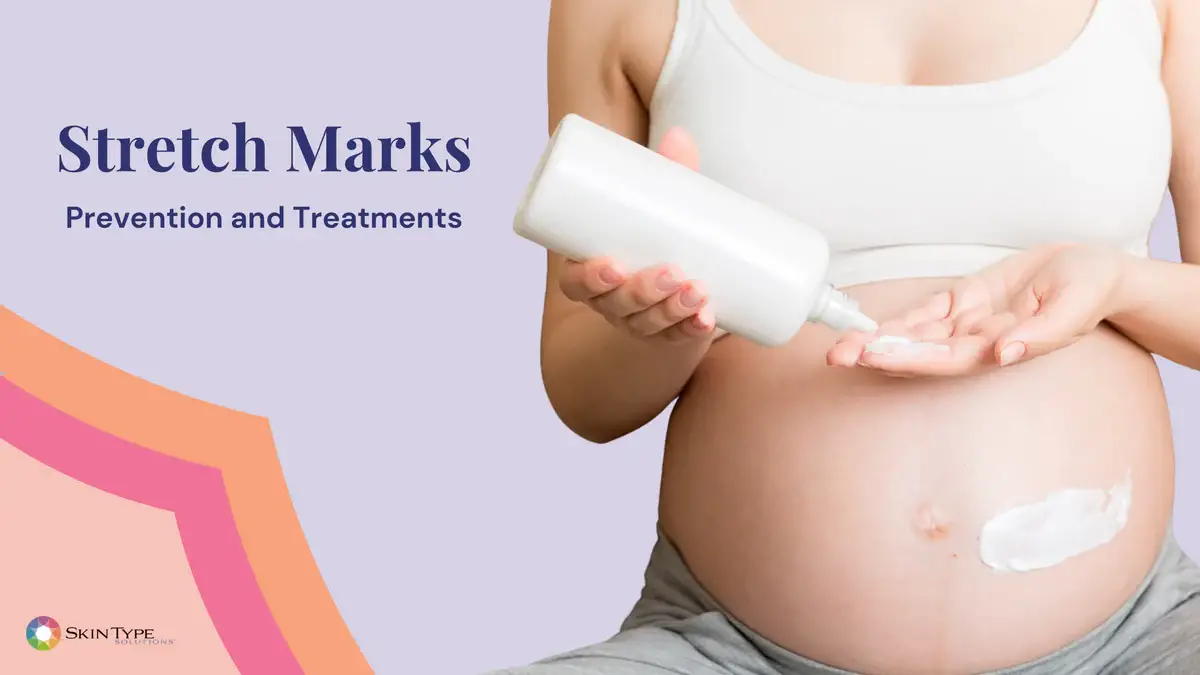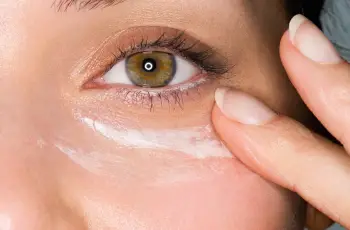
Stretch Marks: Prevention and Treatment
Worried about stretch marks? You’re not alone. Up to 90% of women get stretch marks during pregnancy and weight changes. These narrow stripes form when our skin stretches faster than the skin’s structural collagen can keep up. While some wear their tiger stripes with pride, they can also irritate sensitive skin and leave some feeling self-conscious. The good news? Certain stretch marks can fade over time, especially with targeted skincare. Read on to learn what causes these marks, which types of marks you can minimize, and how to keep your skin stretch-free in the future.
Be sure to take our skin type quiz so you can find the best products for treating striae on your skin type!
What are stretch marks?
Stretch marks, also known as Striae are lines or streaks that appear on the skin when it expands or contracts rapidly. They occur when the middle layer of skin tears from sudden growth. (8) Stretch marks are often red, purple, pink, or brown in color initially. Over time they may fade to a silvery-white color. They are commonly found on the belly during pregnancy, but can occur on the thighs, hips, breasts, upper arms, and buttocks as well. Men bulking up from either the gym or a robust diet might also find striae developing on their bodies. (9)
What causes stretch marks?
The rapid stretching of the skin causes stretch marks. This stretching can happen from sudden weight gain or loss, pregnancy, rapid growth spurts during adolescence, or bodybuilding. (10) Genetics also play a role. Some people are just prone to developing stretch marks while others aren’t. Hormonal changes during pregnancy, puberty, or bodybuilding can increase striae risk too since hormones soften connective tissue and skin loses elasticity.
Preventing stretch marks
While some stretch marks are inevitable during growth phases like puberty and pregnancy, keeping the skin supple and elastic can reduce their formation.(6) Moisturizing daily with creams, oils, or butters containing ingredients like cocoa butter, shea butter, coconut oil, almond oil, or jojoba oil help keep skin resilient. These nourishing ingredients provide fatty acids, antioxidants, and compounds that attract moisture. Well-hydrated and supple skin increases flexibility to better endure stretching without tearing. Gentle skin massage while applying moisturizers can support circulation and stimulate collagen too. Consistent hydration both internally (with water) and externally is key for keeping skin strong enough to avoid stretch mark emergence during rapid growth periods.
[[T17,T21,M08]]
Stretch mark removal
Early stretch marks that are still red/purple may fade over one to two years. Mature white striae are permanent indentations where too much skin was stretched out. No treatment can remove mature white stretch marks, but laser treatments can improve appearance by stimulating new collagen production to plump indented scars. (1,2,6)
Red or purple stretch marks
New stretch marks start out red, purple, pink or brown. At this stage they may sting or feel irritated. The color comes from blood vessels showing through tear/injury sites. Only fresh striae have potential to be reversed since the dermis is still intact – just inflamed from moderate injury. (9) If you want to laser away stretch marks- you need to do it while they are still red/purple.
White stretch marks
Over time, untreated red stretch marks turn silvery-white. Once a stretch mark has turned white, this means the dermis is permanently torn. White striae feel smooth, with a dent-like appearance. They cannot be removed by any laser, acid, or treatment. Some improvement in appearance is possible through procedures that plump indented scars. (9,10)
Stretch marks during pregnancy
Up to 90% of women develop stretch marks during pregnancy, (3) often on the belly and breasts. Pregnancy stretch marks emerge during the sixth or seventh month when skin rapidly expands. Hormones like cortisol and estrogen reduce collagen levels, compromising skin elasticity. (4) Staying hydrated and using moisturizers may reduce stretch marks. (5)
How to treat stretch marks
The only stretch marks that can be treated are recent ones still red/purple. (6) Pulsed dye lasers work well by increasing collagen production which plumps indented scars. Retinoids (derived from Vitamin A) like tretinoin stimulate new collagen too. (2,7) Alpha hydroxy acids chemically exfoliate to reveal smoother skin. (1) Just staying hydrated and massaging in nourishing oils/creams can prevent emergence of new stretch marks.
Conclusion
Hopefully this article helped you understand why stretch marks form, what types of marks can be treated, and how you can work to prevent and minimize their appearance. No one is immune to stretch marks but knowing your risk factors and taking proactive skincare steps can reduce your chances.
We all have unique skin, so what helps or harms one person’s stretch mark situation won’t necessarily apply to another’s. For personalized advice tailored to your exact Skin Type, start by taking our simple skincare quiz in the link below. In around 5 minutes you’ll have your Baumann Skin Type profile, and use this to browse skincare just right for your skin’s needs, including stretch mark creams if that’s your top concern right now!


